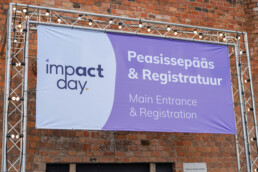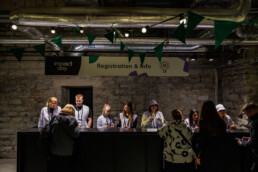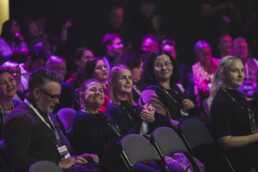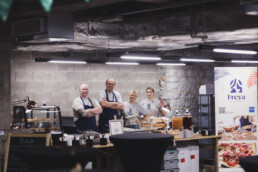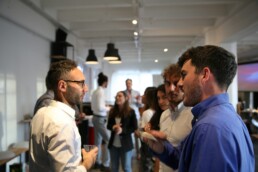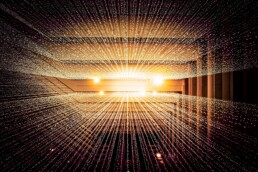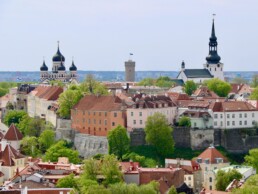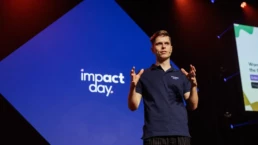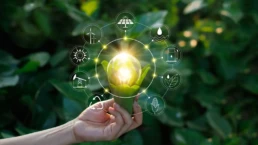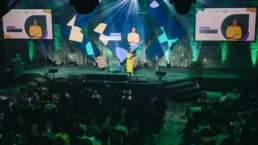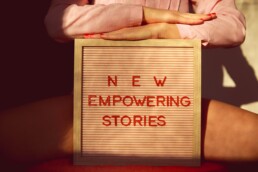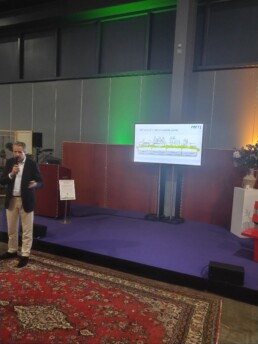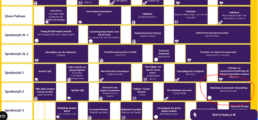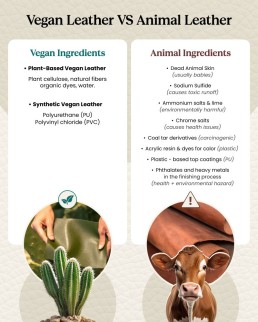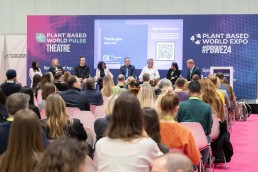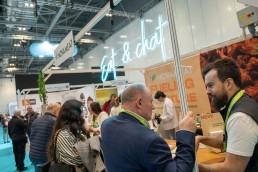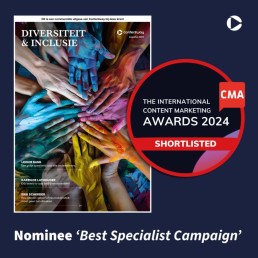Impact Day inspires once again
English
It has been a few weeks since Impact Day, so it is about time for a recap. This event is always well worth attending and highlights all topics relevant to a sustainable world. The beautiful old capital Tallinn is also a feast for the eyes. Although Estonia has only about 1.3 million inhabitants, Impact Day always has an international allure — not least because of the program with speakers from all over the world. Estonia is also known as one of the most digitally advanced countries, partly because it launched e-Residency in 2014. This allows you to run your business entirely online from anywhere and use all the services you need in Estonia.
Tallinn wants to be a leader in sustainability
It is also progressive in the field of circularity and other sustainability issues and wants to be a leader in this area. In 2023, Tallinn was still European Green Capital. But back to Impact Day, which actually consists of two days. How do you travel to such an event? From my base in Espoo – near Helsinki – in Finland, it’s extremely easy: you just take the boat and within two hours you’re sailing into the port of Tallinn. Although some ships are already equipped with more environmentally friendly technologies, the ecological balance of cruises remains significantly negative. Many shipping companies are working on electrifying their ships step by step, and there are also significant developments in the use of renewable fuels such as biodiesel, biogas, and hydrogen.
Sustainable ships in development
Eckerö Line’s m/s Finlandia, which sails between Helsinki and Tallinn, will be equipped with a battery solution to reduce CO2 emissions in early 2026, making it the first hybrid ship in the Gulf of Finland, although the intended fuel savings are only 3%. Nevertheless, this amounts to approximately 500-600 tons less fuel per year.
Program for the first day
The first day of Impact Day at Kultuurikatel, within walking distance of the port, kicked off with David Armstrong after a beautiful musical intro. He is a motivational speaker from the US and explained that your ‘Why’ must be greater than your ‘Why not’. Why do you get out of bed every day to do what you do? After a life full of struggles, he was able to put his finger on the sore spot like no other. Then it was the turn of Clover Hogan, a well-known Australian climate activist who was physically present last year, but now gave her opinion on the current state of sustainability issues via an online screen. How do you ensure that well-being, prosperity, and the environment go hand in hand? Which was basically the theme of the entire event: Building an Ambitious and Self-Sufficient Europe. One of the main organizers, Samuel Põldaru, smoothly tied everything together. And, just like last year, food and drinks were well taken care of.
Versatile topics
The rest of the day, various other interesting topics were discussed on the three stages — Impact Stage, Sustainability Stage, and Inspiration Stage — including reducing textile waste, the power of circularity, designing green cities, and reducing food waste. Although his advanced age (80) sometimes made him difficult to understand, the well-known Estonian zoologist and ethologist Aleksei Turovski stood out for me. His story, entitled ‘Animals Don’t Work for the Market. Are They Doomed?‘ was about the successful sustainable development of animal populations, which is inevitably linked to Shelford’s law: animals use resources and services in ecosystems on an optimal basis, not on a maximum basis.
This results in ecosystems that create a surplus — that is, more resources than the systems themselves need to thrive. This surplus is, for example, the thick layer of humus in the soil, the abundant oxygen in the air, and the peat in the swamp. It is what we humans have mistakenly come to take for granted and use at our own discretion. In reality, it is the only guarantee for the survival of biodiversity on earth. In light of current climate change, with countless animal species and entire coral reefs threatened with extinction, this is one of the most sensitive issues.
The day was concluded by Seth Godin, multiple bestselling author and marketing guru. He emphasized the importance of collaboration, local initiatives, and, last but not least, consistency. When you do things you truly believe in, something beautiful can emerge.
Program for day two
The second day began, once again, with beautiful musical accompaniment and a keynote speech by Gunter Pauli, a pioneer who is also known as the “Steve Jobs of sustainability”. He founded Zero Emissions Research and Initiatives (ZERI) in 1994 and is the author of The Blue Economy. He has also published 20 books in more than 30 languages and 365 fables: inspiring stories that introduce children to science and emotional intelligence. His story focused primarily on innovations and inspiration: there are now many more advanced methods and techniques available than wind and solar energy. And they are also cheaper, such as using ocean waves. This second day was also filled with interesting sessions: topics included food systems, the true value of sustainability, raw material use, the impact of AI, and growing with integrity. The latter is also the theme for next year: the new ROI, or Return on Integrity. That is exactly what is needed right now for the shift to a truly more sustainable world.
📷 The photos were taken by Laura Luga, Rasmus Kooskora, and Silver Gutmann.
ℹ️ Sustainability Content Agency is an ambassador of Impact Day and writes, edits, translates, and advises on sustainability, social impact, and health in almost all European languages. Contact us for more information or book a short call via Calendly.
Memberships and network organizations
English
Sustainability Content Agency mainly focuses on organizations that are active in the fields of sustainability, social impact and health. Why this focus? The answer is actually quite simple: because these are important issues.
The world is currently undergoing a transition in many areas: think of the climate crisis, gender issues and the mounting problems in healthcare, including staff shortages and higher costs. As a journalist and founder of SCA, I have interviewed countless people in these sectors, which has convinced me even more to focus this new initiative on these topics in particular.
Connection with themes
But my connection to these issues goes back much further. Back in 2015, MdR Text Bureau, the legal entity of SCA and active since 2008 primarily in the translation sector, became a member of the International Association of Professional Translators and Interpreters (IAPTI). This is an organisation for translators and interpreters that aims to promote ethical practices in the sector. Over the years, I have seen, as in many other sectors, that the emphasis is increasingly on production. Freelancers are simply being pressured to work at ever lower rates – which is, of course, not a new phenomenon.
But the blame cannot always be placed on the agencies that want to maintain their margins. You also have to look at multinationals which, despite making huge profits, want to get the best deal possible. This actually touches on issues such as sustainability, social impact and health. And, not unimportantly, quality also suffers: the emphasis on production leads to shoddy work and leaves little room for job satisfaction.
Sustainability Content Agency wants to do things differently, without being naive. By that I mean that we are happy to participate and listen to our clients’ wishes, but we don’t want to be competitive at all costs. So if a client only looks at the price and doesn’t value the expertise we have in the above-mentioned areas, then that’s a no-go. Moreover, the rates charged by linguists, translators and creators are simply respected.
Making positive change possible
In addition, SCA will not draw such a strict line between clients if they are not yet fully sustainable. It is important to get things moving in a positive direction and to support noble initiatives. That is the only way to move forward. And that is exactly what we stand for: putting sustainable companies and actions in the spotlight. Without resorting to greenwashing. The best way is often not to shout it from the rooftops, but to make consistent improvements and integrate them into policy. SCA can also be of strategic value here and provide valuable input on substantive issues.
Network organization for sustainable impact
Creatives for Climate is another non-profit organization of which SCA is a member. They form a global ecosystem for non-profit creatives. They are supported by, among others, the European Union, the Power Europe Narrative for Civic Ecology (PENCE) initiative and GreenFutures. All of these institutions want to accelerate the ecological transition in Europe by supporting professionals from the creative sector and harnessing their creativity for climate solutions.
Their main goal is to ensure that the truth is told, stories are put into the right context and systemic change is brought about. They unite more than 7,000 professionals in over 90 countries, have an association of ethical agencies and are a rapidly growing network of individuals and brands committed to the climate.
Language workshops, seminars and events
And last but not least: from a linguistic point of view, SCA is a member of Nordic Editors and Translators. NEaT is an association that offers courses, professional development and a network for editors and translators working with the English language in the Nordic countries. What I like about this organization is that they are not overly concerned with trends and really want to focus on the language sector and related subjects. It’s a bit old-school, but with a sideways glance at innovations and technological developments that are taking place. Their workshops and seminars are therefore really worthwhile.
Sustainability Content Agency writes, edits, translates and advises on sustainability, social impact and health in almost all European languages. Please get in touch if you want to know more. You can also book a quick call via Calendly.
What is the real impact of AI?
English
Artificial intelligence (AI) has become ubiquitous, with its potential seemingly limitless. Almost everyone has experience with it by now and has formed an opinion — whether at the kitchen table or at work. In just a few years, we’ve witnessed a full-blown AI revolution, one that shows no signs of slowing down. But what will remain of it in the future? How efficient are these calculation models and tools, really? What do they ultimately deliver? And most importantly, what is AI’s environmental impact?
Bubble or not?
A recent article on nos.nl (the only Dutch source in this article) questions the actual value of AI and suggests we may be on the verge of a bubble bursting and a new economic crisis:
“The growth of large tech companies continues unabated. Companies that have shifted their focus to AI in recent years are experiencing a golden age. Companies such as Microsoft, Google, and Nvidia are performing exceptionally well on the stock market.”
The AI market is booming
The figures are staggering: Nvidia’s market value has increased tenfold in less than three years, rising from over $400 billion to $4 trillion. The five largest American tech companies are now even bigger than the combined economies of the Netherlands, Germany, France, the UK, Italy, and Spain.
Massive investments in AI development are also transforming the global landscape. Gigantic data centers are being built worldwide — I drove past one near my home yesterday. Nature, of course, pays the price: entire sections of forest often disappear to make way for these facilities.
Jelle Zuidema, associate professor of explainable AI at the University of Amsterdam, notes in the same NOS article that more and more experts are questioning whether AI will quickly lead to increased productivity and significant cost savings.
But shouldn’t the discussion focus more on AI’s impact on the climate? Aren’t we repeating the same pattern as modern societies — prioritizing economic growth while the world literally burns and climatologists sound the alarm?
AI models have enormous emissions
Plan B Eco, a Polish startup focused on sustainable living and planetary protection, highlights the issue in an extensive article: global data centers account for 2.5% to 3.7% (source: 8 Billion Trees) of worldwide greenhouse gas emissions — more than the aviation industry. Training a single large AI model can emit around 300 tons of CO₂.
Each ChatGPT search consumes nearly 10 times the electricity of a typical Google search, often powered by fossil fuels like coal and gas — the primary drivers of climate change. That’s not what we signed up for.
And we haven’t even discussed water consumption. Dr. Camilla Pang has investigated this issue and discovered GreenPT, a Dutch AI tool aiming to compete with ChatGPT and Mistral in a sustainable way. Major media outlets, including The Guardian, have also covered this topic.
Beyond CO₂ emissions and water use, we must consider the rare earth metals mined for AI production — and the often low-paid workers who sustain these unsustainable practices.
How much water is actually consumed?
According to a study by the University of California, every time you run an artificial ChatGPT query, you consume an increasingly scarce resource: fresh water. For every 20 to 50 queries, approximately half a liter of water is lost from our overburdened reservoirs in the form of steam emissions. Data centers consume water by using electricity from steam power plants and by operating cooling systems to keep their servers at safe temperatures. In the U.S. alone, Google’s data centers are estimated to have used 12.7 billion liters of water in 2021 for cooling.
According to the article, a two-week training session for the GPT-3 AI program in Microsoft’s state-of-the-art U.S. data centers consumed approximately 700,000 liters of fresh water — almost as much as the production of about 370 BMW cars or 320 Tesla electric vehicles. Consumption would have tripled if the training had been carried out in Microsoft’s data centers in Asia, which are less efficient.
The university researchers therefore argue that large technology companies must take responsibility and set an example by reducing their water consumption. “It is truly crucial to expose and address the hidden water footprint of AI models, given the increasingly serious crisis of freshwater shortages, prolonged droughts, and rapidly aging public water infrastructure,” according to the article titled “Making AI Less Thirsty”.
GreenPT as a Sustainable Alternative
Fortunately, some companies recognize the importance of this issue and are committed to minimizing the environmental impact of their AI models. While ChatGPT lacks a proactive sustainability policy, Mistral AI takes measurable steps through life-cycle data, open reporting, efficiency guidelines, sustainable hardware, and strategic partnerships.
Then there’s GreenPT, a true game-changer, alongside its equally sustainable data center partner, Leafcloud. Unlike traditional providers, Leafcloud has designed a digital infrastructure that works with — rather than against — the environment. As Dr. Camilla Pang notes in her article, they offer a bold vision for powering future cities.
How do they do it? By reusing energy — capturing heat from data centers to warm communal swimming pools, showers, and buildings. Brilliant, right? We need more of this — and greater transparency — so consumers and businesses can make informed choices.
Quality of AI Tools
How do these chat tools compare? I tested all three for text-related advice, error correction, and topic-based queries. None are perfect: none caught the spelling error “financieën” in my native language, Dutch. When I asked for verification, ChatGPT and GreenPT confirmed it was indeed incorrect, while Mistral still claimed it was correct — so it didn’t recognize the word itself.
Beyond that, the differences are minor. Mistral excels at stylistic suggestions, while ChatGPT and GreenPT proactively offer follow-up recommendations and additional sources — without needing specific prompts.
GreenPT: The Most Sustainable Choice
Currently, GreenPT operates on a subscription model, with the cheapest plan at €4.50/month for 15 daily prompts — ideal for personal or moderate workplace use. Their business subscriptions remain affordable, but paying for sustainability feels counterintuitive. Ideally, these companies should receive government and financial support to operate for free — as the world doesn’t have time to wait. For now, though, we must work with what we have.
Sources:
NOS article (in Dutch): https://nos.nl/artikel/2586573-is-de-euforie-rond-ai-een-bubbel-die-op-knappen-staat
Arxiv: https://arxiv.org/pdf/1906.02243
The Guardian: https://www.theguardian.com/commentisfree/article/2024/may/30/ugly-truth-ai-chatgpt-guzzling-resources-environmentgreenpt
Goldman Sachs: https://www.goldmansachs.com/insights/articles/AI-poised-to-drive-160-increase-in-power-demand
Dr Camilla Pang: https://camillapang.substack.com/p/my-experience-with-greenpt
University of California: https://news.ucr.edu/articles/2023/04/28/ai-programs-consume-large-volumes-scarce-water
Sustainability Content Agency writes, edits, and translates content on sustainability, social impact, and health in almost all European languages.
Soon: Impact Day 2025 in Tallinn
English
On 9 and 10 October, it’s time again for Impact Day in the beautiful old city of Tallinn in Estonia. If you want to try something different, gain inspiration and discover a new city, this is the perfect opportunity.
No topic related to sustainability will be left untouched, including cleantech, nature, the food industry, mobility/transport, construction and social entrepreneurship. You can listen to renowned speakers such as entrepreneur and best-selling author Seth Godin, climate activist Clover Hogan (who was also present last year), author and non-profit entrepreneur (Sensei) David Armstrong and many others.
This year’s theme: Building a bold, self-sufficient Europe.
Impact Day is the largest event of its kind in Northern Europe and focuses primarily on promoting social, responsible and environmentally friendly business practices, where well-being and prosperity go hand in hand.
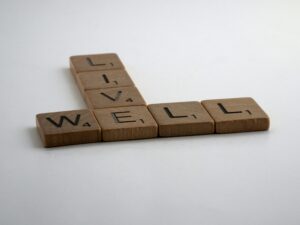
The world is going through a period of instability and change, which is accompanied by all kinds of uncertainties. Geopolitical tensions also necessitate a more self-sufficient and sustainable European continent. At this event, you can connect with leaders, innovators and policymakers committed to positive, sustainable action. You can enjoy more than 80 sessions, including keynotes, practical workshops, discussion panels as well as a pitch competition.
The big question here is: how can we turn the current global security crises into opportunities for stability, while making the transition to low-carbon industries and a more sustainable society? You will connect with people who, like you, want a strategic, collective shift to enable the necessary changes.
This year, Impact Day relocates from the Põhjala Factory to a larger, more central venue: Kultuurikatel (‘The Creative Hub’).

Go to Visit Tallinn for all the information you need about this picturesque medieval capital of Estonia, which dates back to 1154. In 2025, Tallinn has just over 450,000 inhabitants, a third of the entire country. Over the years, the city has fallen into the hands of the Danes, Germans and, most recently, the Russians. A remarkable fact is that in 1980, the Moscow Olympic Games were partly held in Tallinn, as sailing competitions were organised there. It was not until 1991 that Estonia finally broke away from the Soviet Union and became a sovereign country again, but a significant part of the population is still Russian.
Would you like to come too? Use the code SCA15 for a 15% discount and, until 26 September 2025, you will even receive an additional 30% discount thanks to Early Bird prices.
Here’s all the information you need:
Website: https://impactday.eu/
Programme: https://lnkd.in/eTCnAXxJ
Tickets: https://lnkd.in/eB9xMp9W
📢 Sustainability Content Agency is an ambassador of Impact Day and helps organizations with the writing, translating and editing of a wide range of materials related to sustainability (in all European languages). Simply send an email to info@sustainabilitycontentagency.com to discuss your requirements or book a short meeting via Calendly on this site.
How do you convey your message in a changing world?
English
Talking about the climate and making a personal contribution is no longer the preserve of a small group of people. In the past, they were called tree huggers or climate fanatics.
Nowadays, if you don’t have solar panels, you’re not really participating.
If you don’t eat vegetarian or vegan meals from time to time, you’re not really health-conscious.
If you don’t drive an electric car, you’ve really missed out.
If you only buy fast fashion, you’re not thinking things through.
If you read the above statements, which may be a bit exaggerated here and there, things are actually going quite well.
It starts with a shift in thinking. People inspiring each other. Even if it may not come entirely from within, things are moving.
The facts don’t lie. We can’t be truly positive about the climate, but approaching it with optimism is something to think about. Providing objective information is also important, without making people feel cornered. You’re dealing with ingrained habits.
Research shows that it’s actually not such a good idea to constantly show how vegan, environmentally conscious or impact-driven you are. It’s simply one of your unique selling points. You’re still mainly selling a product or service, not a climate benefit.
Want to communicate sustainability and social impact more effectively? At Sustainability Content Agency, we help you do just that, in almost all European languages.
Just send a message to info@sustainabilitycontentagency.com or book a quick 15-minute call via Calendly to discuss your needs.
Pictures by Andreas Kind (road in forest), Etienne Girardet (What is your story?) and Ava Sol (New empowering stories).
Impact Fair in Utrecht
English
5 reasons why you should go to the Impact Fair
Organizer Micha van Hoorn and his team are busy with the final preparations to ensure that everything runs smoothly when the Impact Fair in Utrecht (Holland) starts. Organizing such an event is quite a roller coaster: a two-day trade fair followed by an open day on the Saturday. But it’s worth the effort! What are the top 5 reasons to come to Utrecht on April 3, 4 or 5, in his opinion?
1. Learn
We have a great program with 140 speakers spread over 7 stages. Based on practical tips, tricks and tools, our visitors discover how they can get started today with the world of tomorrow. They do this by sharing their knowledge and inspiring others in various impact domains, in the broadest sense of the word. You can learn more about a sustainable economy, but also, for example, how to cook healthier.
2. Meet
Every impact agenda indicates that we need to accelerate. How do you do that? By working together more. But to do that properly, you first have to get to know each other. At the Impact Fair, we facilitate meaningful meetings where people can discuss how they can strengthen each other and make a greater impact together. There will be meet-ups, speed dating sessions, dating shows, guided tours and networking drinks. Everything is designed to maximize introductions and connections. We also have a great app where you can connect with each other. All parties are present: we connect leaders, young people, engaged citizens, government, social enterprises, corporates, NGOs, SMEs, educators, associations and funds. In short, representatives from all sectors of society will be there.
3. Do
There are 108 interactive experiences that let visitors discover how they can make more of an impact. We are the only impact experience center in the world and certainly the largest in Europe. You can take immediate action to make the world a better place. Think about planting trees, cleaning up litter, recipes for vegetarian or plant-based cooking, playing serious games, going to a pop-up cinema or experiencing the overview effect with VR. All activities that you can do right away to make a positive contribution. The exhibitors also tell their mission-driven story in an interactive way, which makes it easier to understand and remember. And last but not least: experiencing something firsthand makes you more likely to share it with others.
4. Leadership
This year, for the first time, we have a Leaders xCHANGE, which is all about doing business with impact. How can your company be a force for good? How can you ensure that you will stand out as a force for good and commit to the SDG ambitions, for example? The very top of the business community will be present. The economy continues to play a major role in the whole. How can you make doing good financially attractive? You can talk to more than 400 leaders about how to do business with a positive impact. In this way, the most influential group in the Netherlands can transform into the most impactful group our country has ever seen.
5. Movement
We really are a movement. We are all committed to the future of the world. Your impact should be positive and meaningful. It should be fun and cheerful. The so-called positive impact. There are many organizations that stand for this. We set the agenda, but we do so in an optimistic way. We show how much fun it is to do good. That approach to marketing and messaging will help us reach a wider audience. We want to become a ‘household name for impact makers’. This strategy will also bring us more quickly to the social tipping point that prominent sustainability scientist Jan Rotmans talks about so much: once you have persuaded 25% of a group to change, that becomes the norm. That is 4.5 million people in the Netherlands. By attending the Impact Fair, you take the first step in becoming a changemaker.
Interview: Michel de Ruyter – Sustainable Content Agency
Sustainability Content Agency will be hosting a workshop on Sustainable Storytelling at the Impact Fair on Friday afternoon, April 4, from 2:30 to 3:30 p.m. For the full schedule of all three days, please visit (only in Dutch): https://impactfairnederland.nl/academy/#blokkenschema.
Workshop Sustainable Storytelling
English
In January 2025 Sustainability Content Agency hosted a Sustainable Storytelling workshop for entrepreneurs and managers, which is part of our services.
The session was so interactive that we didn’t even get to the actual writing exercise.
This workshop is designed for companies, organizations, freelancers, and individuals focused on sustainability, social impact, and health — or anyone looking to highlight these topics more effectively in their work.
How do you craft your message in a changing world? By combining interaction with hands-on practice, participants leave better equipped within just a few hours.
Workshops are held at events or online (in English or Dutch) in small groups of 4-8 people, ensuring everyone gets time to share their story and dive straight to the core.
Dates and details for upcoming workshops will be announced soon!
Want to learn more now? Book a meeting via Calendly or send an email to info@sustainabilitycontentagency.com.
Picture by jefunne gimpel
♻️ Are you working in the sustainability, social impact or health space, and sometimes need help with your content and/or visuals?
💚 At Sustainability Content Agency, we only work with copywriters, translators, designers and linguists who, like you, are committed to making the world a better place.
📢 Just drop us a line to see if we can cooperate together. We love every job, big or small.
How unethical is the animal leather industry?
English
The market size of global leather goods was valued at USD 440.64 billion in 2022 and is projected to grow from USD 468.49 billion in 2023 to a staggering USD 738.61 billion by 2030.
The manufacturing of leather has significant environmental impacts and sustainability challenges, with the main environmental concerns being associated with the use of hazardous chemicals, high water usage, air and water pollution, and deforestation.
Leather is seen as a by-product of agriculture. Without livestock raised for food, we would have no hides or skins to make it. But that is exactly the issue.
In 2023, agriculture was responsible for around 11 percent of global GHG emissions. The sector is also the largest anthropogenic source of methane. Methane is the second most abundant greenhouse gas after carbon dioxide (CO2), accounting for about 16 percent of global emissions. It also has a much higher warming potential compared to CO2.
It’s obvious the agricultural industry has to reform drastically. This will be a matter of decades, but it has to happen. Governments are more aware of how serious the problems are, but there is basically no time to waste. Policies around agricultural practices must take into account the effects of soil degradation, water contamination, use of pesticides, and impact on climate change.
This also includes the ethical concerns surrounding the slaughter of animals.
If these are not implemented, there are potentially devastating future consequences.
Let’s take a look at the alternatives to leather. Because there are plenty.
Vegan leather vs. animal leather: which is truly sustainable?
The leather industry might say vegan leather is ‘just plastic’ and therefore unsustainable. But what actually goes into both vegan leather and animal leather?
On one side, we have vegan leather options like mushroom, cactus, pineapple, and other innovative plant-based alternatives. Even if it’s synthetic, the process and impact are drastically different from animal leather. Also cork from the cork tree is a vegan and sustainable alternative. Cork comes from the bark of the cork oak tree, which is primarily found in Mediterranean countries such as Spain, Portugal, and Italy. The bark is harvested every 9-12 years, and the process does not harm the tree. Therefore it is a renewable resource and also biodegradable.
On the other side, we have animal leather – a material that’s marketed as a ‘natural by-product’. But how natural is it really when it goes through layers of processing, chemical treatments, dyes, and preservatives?
Here is a breakdown of their processes:
Vegan leather:
1. Plant-based (e.g., cactus, mushroom, pineapple): plant cellulose, natural fibers, organic dyes, water.
2. Synthetic: polyurethane (PU) or polyvinyl chloride (PVC) – both can be controlled for reduced environmental impact, with PU being less damaging than PVC.
Animal leather:
1. Animal hide (sourced from cruel and unsustainable agriculture).
2. Sodium sulfide (to remove hair).
3. Ammonium salts and lime (for softening).
4. Formaldehyde (a known carcinogen).
5. Chrome salts (a highly toxic substance).
6. Coal tar derivatives.
7. Acrylic resins and dyes for color.
8. Plastic-based top coatings (animal leather has often plastic finishes too).
9. Phthalates and heavy metals in the finishing process.
The above image and process details are borrowed with permission from Shreya Ghodawat. She is a sustainability strategist and consultant, vegan entrepreneur, podcast host, gender and climate activist and keynote speaker from India.
It is clear that the question is no longer which processes are more sustainable.
Vegan leather doesn’t rely on animal agriculture – a leading cause of deforestation, greenhouse gas emissions, biodiversity loss and animal cruelty. And while plant-based and synthetic versions of course also have a footprint, the rise of these solutions offers sustainable alternatives that avoid both cruelty and toxicity.
The leather industry as we know it today is anything but sustainable.
Plant Based World Expo 2024 in London
English
On 13-14 November 2024, SCA was at the Plant Based World Expo Europe in London. The future of plant-based food is not in 2030 or 2050. It’s now.
But sure, there are challenges. For example, in cultivated meat — once far too expensive to buy, but now closer than ever to reaching home plates. During the panel discussion about this subject with Riley Jackson, Billy Nicholles, Joseph Saine, and Annie Conde, they discussed complexities with regulations, including those around building plants. In the UK, procedures can take around 2 years, while in Europe, it may take even up to 4–5 years. Moreover, costs need to be monitored better, as this is where things have regularly gone wrong in the past. It’s still early days, but the market is developing.
On the second day, another discussion focused on dairy. The panel, moderated by Indy Kaur, included Mitch Lee 🧀, Tim Knight, Helen Hartley, and Ali Morpeth (RNutr). There is a lot of misinformation in this sector, including claims that the nutritional value is not the same as regular milk. Nonetheless, the market for plant-based milk is developing at a steady pace (estimates are approx. 7.5% growth per year until 2030). Morpeth emphasized the importance of educating consumers and making them part of a bigger picture based on sustainability. Plant-based is healthy for both your body and the planet — two facts you can no longer ignore.
Mitch Lee, a familiar face on LinkedIn within the plant-based community, is involved in the sales of plant-based cheeses on behalf of Purezza, Europe’s first 100% plant-based pizzeria, and La Fauxmagerie. He said first impressions matter. You don’t have to shout about it; as a restaurant chain, you can incorporate vegan cheese into your products without consumers noticing a difference in taste. As long as it is listed under the ingredients and your product is good, it’s not a big deal.
What are the priorities for the plant-based future in retail? Simon Hurley, John O’Connor, Erik van Gangelen, and Tomas Kofron tackled this subject. Thinking outside the box was one of the key points raised. But new variants of the good old tofu and tempeh can also play a significant role in the food transition. If you have a good product, there is usually a market for it. Again, the importance of raising awareness was highlighted. The responsibility lies not only with the government but also within the market. Companies’ targets around reducing CO2 emissions play a prominent role and will eventually work in favor of companies already working sustainably.
The last talking session was with my wife, Sophie Shand 🌸🌱 of Design Studio Flora 🌸 and Marlana Malerich of Rooted Research Collective after the event, which was a nice ending. If you need help with your designs or food consultancy, contact them.
Sustainability Content Agency writes about sustainability and for sustainable organizations, in almost all European languages.
The Content Marketing Association
English
One of the nicest editions of magazines from Contentway B.V. that I had the pleasure of working on, titled Diversity & Inclusion, has been nominated for an award from The Content Marketing Association. The magazines are distributed with various national media, in this case Het Financieele Dagblad.
Diversity and inclusion are topics that cannot be discussed enough, and reputable companies are leading the way. Read stories about their D&I policies here (only in Dutch): https://lnkd.in/eMva5HQf.
Contentway creates campaigns about specific topics in cooperation with various national news outlets, so contact them if you want to showcase your activities to a large audience (250,000+ readers). Congratulations to Eltjo Nieuwenhuis (head editor), Jelle Stekelbos (campagne manager) and Kiloe Van Benthem (design) and all fellow journalists with this wonderful publication and the nomination.
♻️ Are you working in the sustainability, social impact or health space, and sometimes need help with your content and/or visuals?
💚 At Sustainability Content Agency, we only work with copywriters, translators, designers and linguists who, like you, are committed to making the world a better place.
📢 Just drop us a line to see if we can cooperate together. We love every job, big or small.

